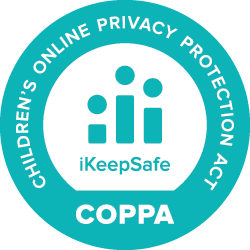Smash Science
The properties of a material may determine its use. In this activity, you will explore the properties of metals and alloys. You will also explore how properties of matter are useful in recycling different materials.
Facilitation Tips and Potential Student Answers
Be sure to scroll to the bottom of the Educator Overview until you see STUDENT CONTENT BELOW THIS LINE. Interleaved in the Student Content section, you will see educator facilitation tips and potential student answers displayed in red, italic text when applicable.
Resource Title:
Smash Science
Description:
The properties of a material may determine its use. In this activity, you will explore the properties of metals and alloys. You will also explore how properties of matter are useful in recycling different materials.
Target Grade Level:
Grades 5-8
Discipline or Course (Audience):
Science
Time Frame:
Two 45-minute sessions without extensions
Suggested Grouping:
3-4 students
Educator Prep:
National, state, and local standards ask students to develop an understanding of the properties of matter. The unique properties of metals and their alloys form the basis for recycling. But in many areas the entire car is still crushed, wasting valuable metals and other materials, polluting groundwater and filling landfills. When a car is crushed, it becomes very difficult to recover the materials of which it is made. The problem is not only separating alloys but many other kinds of materials. Metals can be separated by pulverization and magnetism. Alloys are separated by heating and then differentiation by melting point and density. But that’s not the end. A wide variety of other material, some highly toxic and some quite valuable, can be recovered from a car. To recycle a car rather than smash it, these steps must be followed:
- Drain all fluids including oils, coolants, refrigerants, and fuel.
- Remove the battery and catalytic converter which may be recycled separately.
- Remove tires. (Rubber must be separated from steel. The rubber can be used for paving and other secondary products.)
- The car can now be crushed and pulverized. Once the material is in small bits, the metals can be separated by density. Ferrous metals can be separated from non-ferrous by magnetism. Alloys can be separated by heat. There are more components of the auto that can and should be recycled. At the present time, most plastics and other fibers are left in landfills. But there is a potential to recycle these components as well.
Preparation Directions:
- Gather materials.
- Divide students into groups of 3-4.
- Confirm students will have access to computers and internet.
Remote Learning Adaptations:
This activity can be conducted as a demonstration over video conferencing.
STUDENT CONTENT BELOW
Smash! An old automobile is crushed for recycling. But wait! There are valuable metals, electronics, even rubber from old tires that can be re-used. And there’s battery acid, gasoline and oil that can harm the environment if left to sit in a land fill. How are these materials reclaimed? In many areas, the entire car is still crushed, wasting valuable metals and other materials, polluting groundwater and crowding landfills.
In this activity, you’ll explore how different metals can be sorted during recycling — using the penny as a model! You'll investigate how the U.S. penny changed and how we can tell the difference between old and new pennies by their density.
Materials:
- Device with internet access
- 10 pennies total: Try to bring a mix of older and newer pennies. Aim for a few from the early 1980s and a few from the 1990s or later.
- 100mL graduated cylinder
- water
- balance (digital scales or triple beam)
Safety Notes:
- When using technology, engage in safe, legal, and ethical behavior; this applies to devices (hardware), application or programs (software), and interactions with others.
- There are no anticipated physical safety risks associated with this Activity.
Background: What Changed?
Pennies may look the same, but not all of them are made the same way. At some point in history, the metal used to make U.S. pennies was changed. This change had an effect on how much the pennies weigh and how they behave in science experiments—especially when measuring density.
In this activity, you’ll figure out when that change happened and what it means. By measuring and comparing the density of different pennies, you’ll be able to uncover what’s hidden beneath the surface.
Part 1: Make Predictions
- Look at your group’s pennies. Are there any obvious differences in appearance, year, or color?
- Make a prediction: Do you think pennies from different years are made of different materials? Why or why not?
- List some measurable properties of pennies (e.g., weight, volume, color, thickness).
Part 2: Measure Density
- Discuss in teams: How can you calculate the density of each penny? What measurements do you need?
Hint: Density = Mass ÷ Volume - Use the balance to measure the mass of each penny (in grams).
- Fill the graduated cylinder with water. Gently drop in a penny and measure the change in water level to find the volume (in mL).
- Calculate the density of each penny and record it in your table.
- Compare your results with other groups.
Penny Year |
Mass (g) of penny |
H20 level without pennies (mL) |
H20 level with pennies (mL) |
Volume of penny (mL) |
Density=mass (g)/volume (mL) |
Reflect and Apply:
- How did your group’s data compare to others?
- What year did you notice a change in penny density? How does this match what you expected?
- Why do you think the density changed? What materials were swapped?
- Why do you think the U.S. Mint switched from copper to zinc?
Extension:
Conduct research to determine some of the environmental impacts of disposing of cars in a landfill instead of recycling. Are any of the materials toxic to humans or the environment? Try to find out where people should take their old and broken-down cars in your local community.



